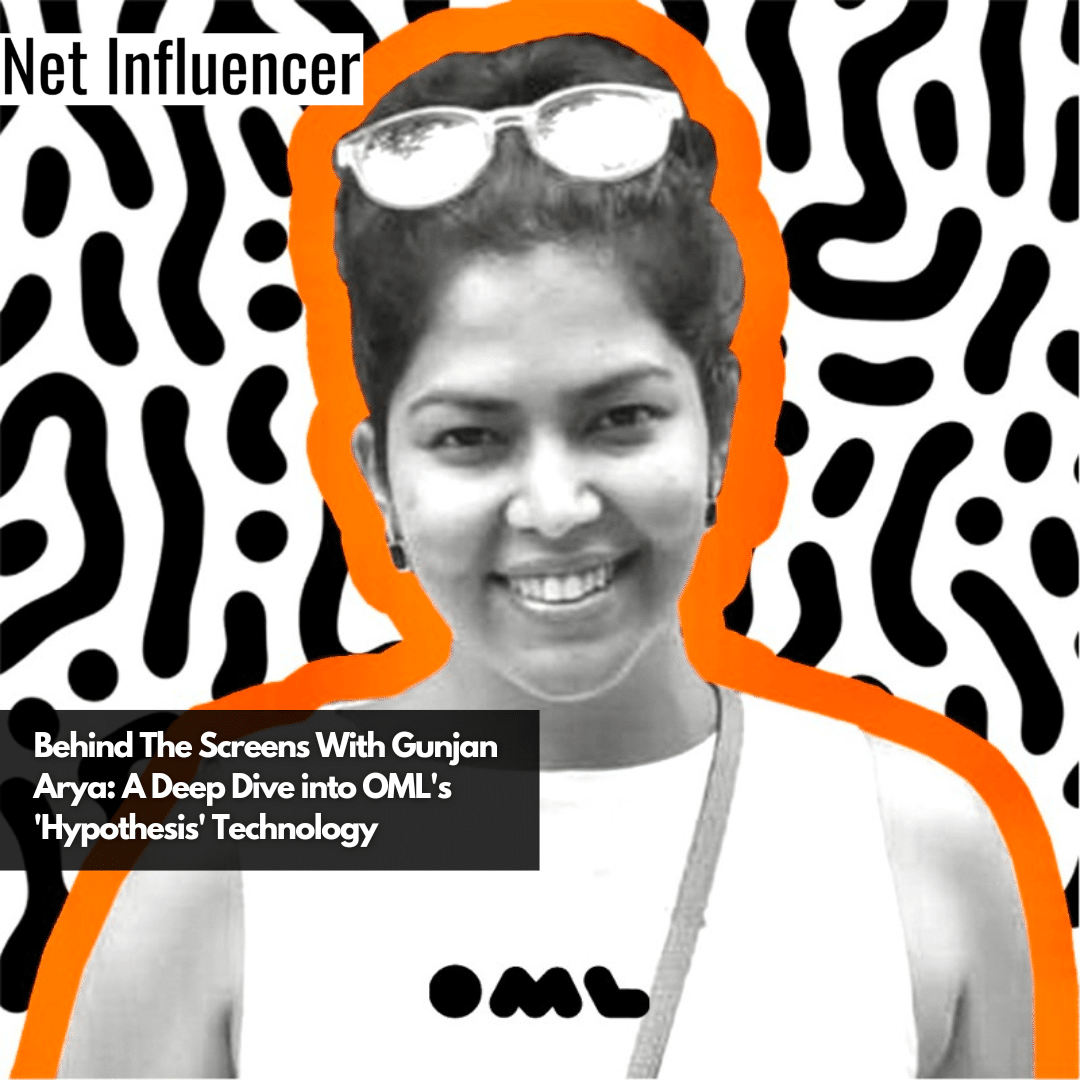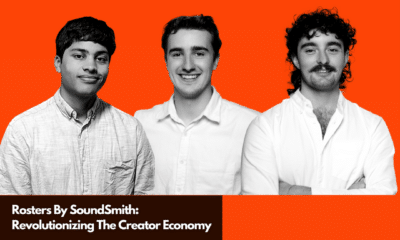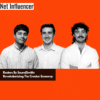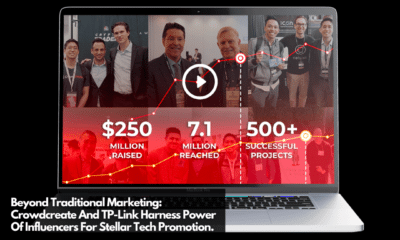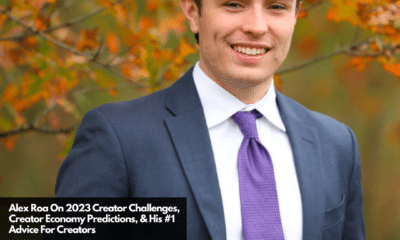Technology
Behind The Screens With Gunjan Arya: A Deep Dive into OML’s ‘Hypothesis’ Technology
Over the past two decades, Gunjan Arya, CEO of Only Much Louder (OML), has keenly observed and navigated the shifts in the creator economy. Under her stewardship, OML, once focused on managing independent musicians, now boasts a wide-ranging roster, spanning from comedians and streamers to chefs and directors. This evolution underscores OML’s adaptability and foresight in the ever-changing creative landscape. Arya takes pride in noting that OML exclusively manages over 100 artists in India, reflecting its diversified expertise.

The longevity of OML’s presence in the artist management realm is a testament to its resilience and adaptability. As Arya recalls, OML’s journey began with managing independent musicians. Today, its vast portfolio includes a medley of talents like comedians, digital celebrities, gamers, and bloggers, capturing the varied fabric of the creative industry.
“Our roster doesn’t stop there,” Arya emphasizes. “It now also encompasses chefs, mentalists, writers, and directors, highlighting our commitment to diversification.” This growth trajectory signifies OML’s deep understanding of the shifting tides in the creator economy.
Arya recalls OML’s earlier ventures into organizing some of India’s most iconic festivals, from music to comedy, and even the renowned U2 fan fest. However, demonstrating their ability to adapt, Arya mentions, “We made the decision to exit the live events business.” For some, this move might raise eyebrows, but for OML, it was a strategic decision, informed by the evolving needs of their artists.
A testament to their innovation, Arya also points out a previous endeavor: the creation of a ticketing company. “It was built with a specific intent,” she explains, “to allow artists to have direct access and control over their fan data.”
And that’s been OML’s guiding principle, as Arya candidly stated, “Over the last 20 years, we’ve built businesses around what artists need to have more control over their own creative careers.” The emphasis on ‘control’ is particularly poignant. In a world where creators often feel at the mercy of platforms and algorithms, OML has been instrumental in giving them the reins of their destiny.
“Hypothesis is one more step in that direction,” Gunjan asserts, her voice filled with conviction. She paints a vivid contrast between the established media brands and the independent creators, highlighting the disparities in access to critical data insights. “If you’re a media brand, you know your views and competition. Advertisers base their decisions on these numbers. But creators? They’re often in the dark.”
This lack of transparent and actionable data for creators can be stifling. While established media has insights into performance metrics and competitor benchmarks, individual creators grapple with ambiguities. “Creators often don’t understand the flux in their followers or the preferences of their fan base. This information vacuum impedes their growth,” Arya elucidates.
OML’s solution to this gap is clear: offer creators the same sophisticated data that brand managers use. “Hypothesis was born out of that very need,” Arya says. “Its primary function? To empower creators with data insights akin to what brands possess, enabling informed decisions to bolster their growth.”
“Influencer marketing, in its current state, operates much like a cottage industry,” Arya observes. From textual communication with creators to relying on screenshots and Excel sheets for data consolidation, the processes seem archaic. “Whether you’re an intern or a CMO, the modus operandi is alarmingly similar,” she notes.
With Hypothesis, OML seeks to change the narrative, shifting from this “cottage industry” approach to leveraging technology for a more streamlined, scalable model. Arya envisions a dashboard that aggregates metadata, offers a searchable database, and even predictive insights. “It’s time for influencer marketing to evolve, reflecting its stature as one of the fastest-growing mediums,” she emphasizes.
Arya’s conviction about the power of creators is palpable. She concludes with a poignant statement, reflective of OML’s core belief: “We’ve always told brands to invest in artists, not just media platforms. Artists offer genuine reach and relevance. Their fans are genuine, their influence real.”
Behind The Screens With Gunjan Arya: A Deep Dive into OML’s ‘Hypothesis’ Technology
Hypothesis Feature Set
At its core, Hypothesis offers a refined search mechanism. Arya explains, “Consider a brand aiming to target a specific demographic: followers split as 70% male, 30% female, aged between 25 to 34, residing in Buenos Aires and predominantly Spanish-speaking. Traditional methods would mean scouring databases or platforms, hoping to chance upon the ideal match. But Hypothesis simplifies this.”
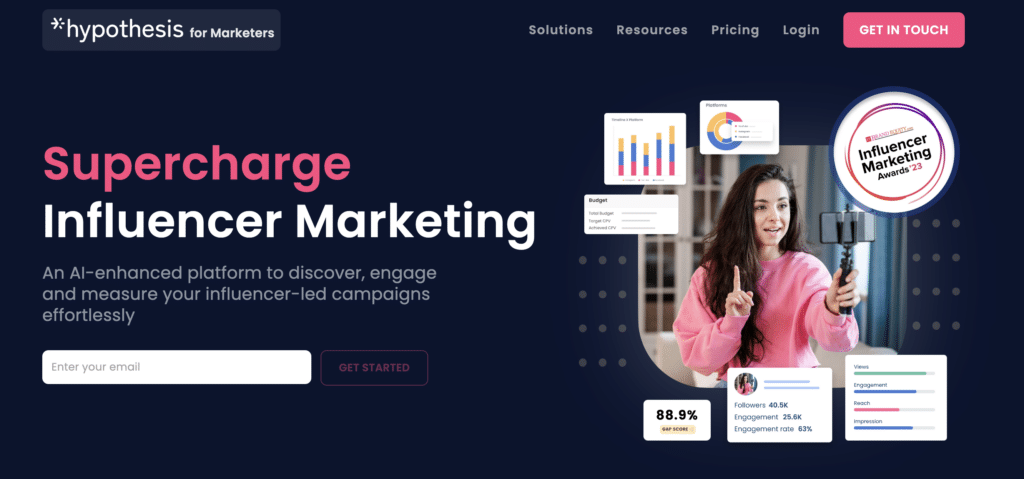
What truly sets the platform apart, however, is its ability to learn and refine its search parameters. Arya elaborates on this enhanced feature, “Once you identify a creator who aligns with your brand’s ethos, you can prompt Hypothesis with a ‘find me look-alike creators’ request.” The AI then leaps into action, sifting through vast databases, training its model to identify and suggest influencers that mirror your original choice, streamlining the selection process. “Instead of combing through 30,000 potential matches, the system narrows it down considerably,” she adds.
But the capabilities of Hypothesis don’t just end at efficient influencer matching. Arya dives deeper into the advanced functionalities that the platform offers. “We’ve now incorporated features that look at campaign efficiency,” she states. Brands can input their specific campaign objectives, and Hypothesis reverse engineers the data. If a brand’s goal is to achieve, say, a reach of 7 million, Hypothesis suggests the optimal mix of creators to partner with to realize that target.
Filtering for Authentic, Impactful Creators
“Influencer marketing’s lucrative nature means there’s a surge in activities on social media platforms—including bot follows and engagement farms.” Such practices are available at a pittance, allowing creators to showcase inflated follower numbers and subsequently charge brands a premium.
The solution? OML’s GAP Score. Arya explains its significance, “This metric helps brands differentiate between genuine engagement and artificial inflation.” If a creator’s GAP Score is less than 50%, it signals a red flag. “It essentially indicates that over half of their audience may not be genuine. It’s merely an inflated number, not a reflection of their actual influence or reach.”
For brands investing significant resources in influencer collaborations, this becomes a vital tool in their decision-making arsenal. The GAP Score isn’t just a statistic—it’s a reality check, ensuring that brands achieve the genuine engagement they’re paying for. Arya stresses the score’s utility, “It’s imperative for brands to ascertain that they’re getting a genuine return on investment.”
To help do this Hypothesis has built a set of features to help brands identify the creators most likely to drive value for brands. Arya categorizes these filters into three primary groups, each tailored to offer a different layer of insights:
Creator-Focused Filters: “These filters hone in on the influencer’s personal attributes and areas of expertise,” Arya explains. For instance, certain campaigns, especially those by alcohol brands, mandate influencers to be above a particular age, ensuring regulatory compliance. Another aspect is the influencer’s niche or domain, whether they predominantly talk about fitness, luxury, automobiles, or other topics. “This helps brands gauge the influencer’s sphere of influence,” she adds.
Audience-Centric Filters: Delving deeper into the demographics of the followers, Arya elucidates, “This set determines the audience composition.” An influencer’s audience may predominantly be female or primarily aged above 18—insights that can guide a brand’s decision, especially when evaluating the potential purchasing power of the audience. Additionally, understanding the preferred language of the content, especially in linguistically diverse countries like India, can be pivotal. “While Hindi might offer extensive reach in the northern regions of India, it might not resonate as effectively in the southern territories,” Arya points out.
Efficiency-Driven Filter: The GAP Score, which stands as the embodiment of authenticity, falls under this category. Arya underscores its importance, “This is the quickest route to ensure the genuineness of an influencer’s following.” As brands grapple with the challenge of distinguishing real followers from artificial numbers, the GAP Score emerges as a beacon, ensuring collaborations based on genuine influence.
OML’s Hypothesis Technology in use
Recalling a specific collaboration, Arya says, “We collaborated with a brand keen on venturing into the music space, with a focus on spotlighting emerging musicians.” The strategy seemed straightforward until OML presented an unorthodox proposal: to launch the musician’s album on India’s most prominent comedy channel.
The suggestion was met with skepticism. Arya elaborates, “Despite presenting compelling data, convincing the brand to partner with a comedy channel for a music launch was challenging.” Yet, OML’s conviction, rooted in the insights from Hypothesis, led the brand to take a calculated risk.
Fast forward to today, and the outcome speaks volumes. “That very musician,” Arya proudly states, “launched about seven years ago on that comedy channel, is now among India’s top independent artists.” A success story that didn’t just end at national acclaim. “Their tracks feature in the Marvel series, and they’ve made their mark in international Hollywood movies,” she adds, emphasizing the musician’s meteoric rise since that unconventional debut.
But what was the rationale behind such a seemingly counterintuitive decision? Arya explains, “The comedy channel in question was the nation’s most-watched, predominantly attracting audiences aged 18 to 34.” OML’s hypothesis, backed by data, was simple: this demographic, while relishing comedy, undoubtedly had an appetite for music, especially from emerging artists.
“It’s about recognizing overlapping interests,” Arya asserts. “Just because you enjoy comedy doesn’t mean you don’t appreciate good music.” She further stresses the importance of data in such decision-making processes. According to Arya, these unorthodox choices become more palatable when there’s concrete data to support them. It eases the task of persuading both brands and creators.
A similar story comes from OML’s foray into Lebanon. For three consecutive years, OML endeavored to reshape the country’s comedic arena. But the journey began with an uphill battle. “During our inaugural year, we had to persuade our partner brand to embrace comedy, even though Lebanon was predominantly known for its music scene,” she said.
Their maiden venture centered on an unconventional approach. Arya detailed, “We collaborated with a local comedian who, armed with just a portable speaker, would spontaneously perform at cafes, co-working spaces, and public areas in Beirut.” The initiative, devoid of the trappings of a traditional comedy club, was transformed into a YouTube series. This guerrilla-style comedy captured authentic reactions, setting the stage for a comedic revolution.
By the second year, OML’s vision grew bolder. Arya shared, “We identified a comedian known for his distinctive style—commenting humorously over video clips, yet never revealing his face.” Encouraging him to break this mold, OML launched Lebanon’s premier YouTube-based late-night comedy show. The format was a resounding success, drawing attention from Lebanon’s elite. “Celebrities vied to be guests, elevating the show’s stature,” Arya noted.
The triumphant culmination occurred in the third year. “The show’s skyrocketing popularity enabled us to sell tickets for live audience participation—a full circle from the impromptu sessions that had commenced our journey,” she reminisced.
Central to this success was OML’s commitment to leveraging data. Arya emphasizes, “Understanding the audience’s preferences and aligning them with data insights fosters opportunities. It’s a symbiotic relationship that benefits both artists and brands.”
Arya’s vision underscores OML’s core tenet: a marriage of artist management and brand alignment. “Our DNA is deeply rooted in artist management,” she affirms. “We believe in a mutual victory—when artists thrive, brands succeed, and vice versa.”
Measurement and KPIs
“We have a unique vantage point, given our extensive experience across countries. While claiming to decipher social media algorithms entirely would be an overreach, our nuanced understanding of their intricacies has enabled us to develop what we refer to as a ‘social media prediction engine’.” This engine, grounded in empirical data and trends, offers brands a forecast of outcomes they can anticipate when collaborating with specific creators.
Arya delves into OML’s internal use of this system, emphasizing its proven track record. “For the past seven years, we’ve deployed this engine, resulting in over 300 top trending videos on YouTube—all achieved organically, spanning languages beyond our immediate comprehension. This success can be attributed solely to our proficiency in reading and interpreting the data.”
Yet, the capabilities of Hypothesis aren’t confined to mere predictions. Arya introduces another pivotal aspect: the Campaign OS. “While our discovery OS aids in finding the perfect creator match, the Campaign OS takes over post-collaboration, offering a real-time tracking dashboard.” This allows brands to monitor and evaluate campaign performance in real-time—a stark departure from traditional media measurement methods.
Arya makes a compelling argument for this real-time evaluation approach. She observes that many brands, entrenched in traditional media mindsets, await an annual brand lift study to assess efficacy. But digital terrain is vastly different. Social media content is ephemeral—what’s relevant today might be obsolete tomorrow. Hence, the need to measure and adapt instantly.
“The real-time feedback isn’t just about tracking; it’s also about strategizing. When you discern a particular content piece resonating well, it’s a cue to amplify such content. The flexibility and immediacy offered by our dashboard ensure that brands remain agile, optimizing their campaigns on the fly.”
What next for Hypothesis/OML
While discussing the new additions to Hypothesis, Arya notes, “Beyond our Discovery OS, which aids in pinpointing the ideal creators, and the Campaign OS, facilitating real-time campaign tracking, we’re gearing up to unveil our third module: the Creator OS.” Arya elaborates, “Currently, creators grapple with fragmented views—separate dashboards for YouTube, Instagram, and other platforms. Creator OS consolidates these fragmented glimpses, providing a panoramic view of a creator’s entire social media footprint.”
But the Creator OS isn’t just about offering a unified perspective. It’s designed to deliver actionable insights to creators. Arya points out a feature that stands as a testament to this goal: “A ‘similar creators’ tab, traditionally aiding brands in finding creator matches, can now guide creators in answering pivotal questions: Who are potential collaborators? What are emerging content trends capturing my audience’s interest?”


